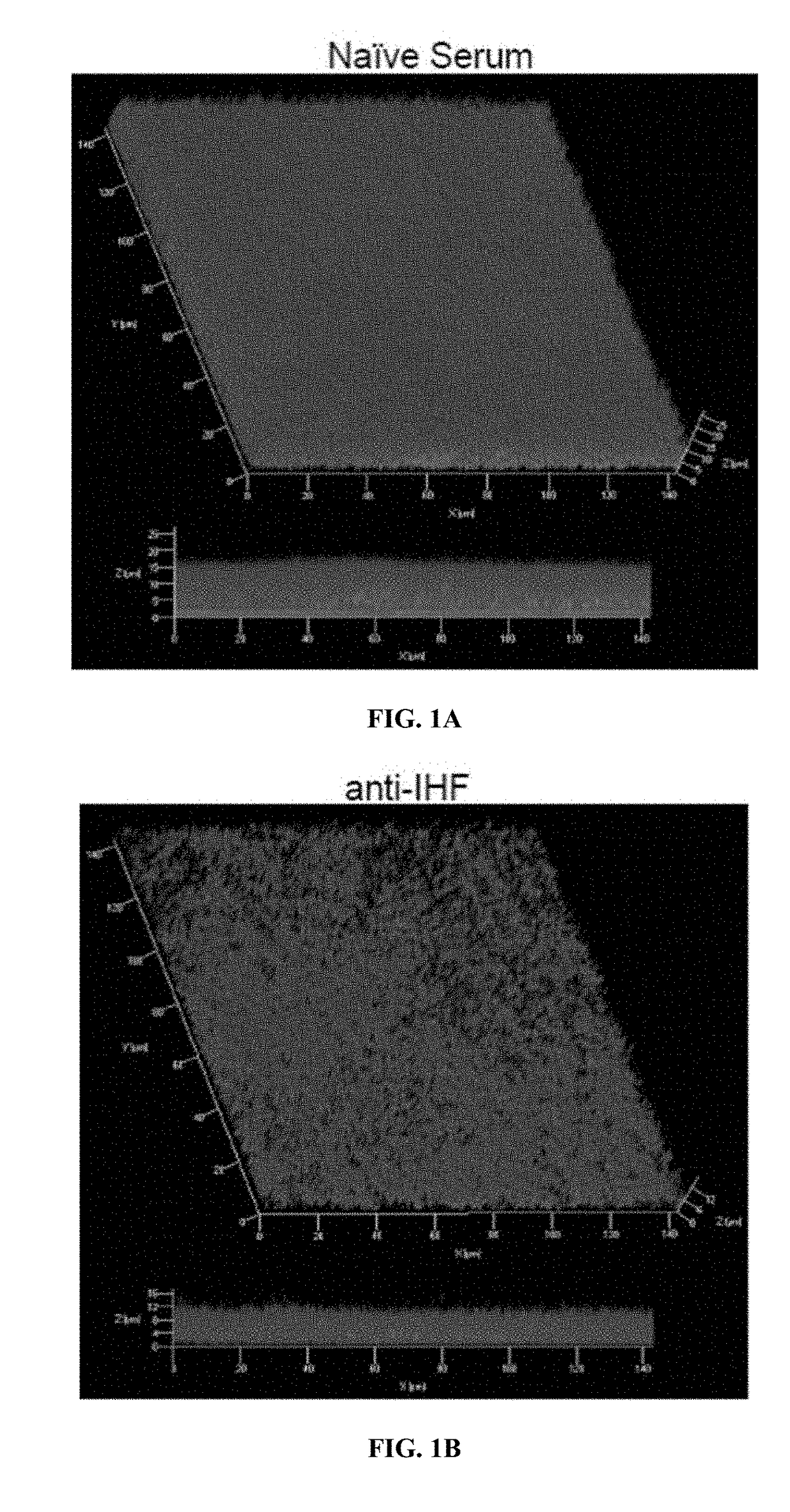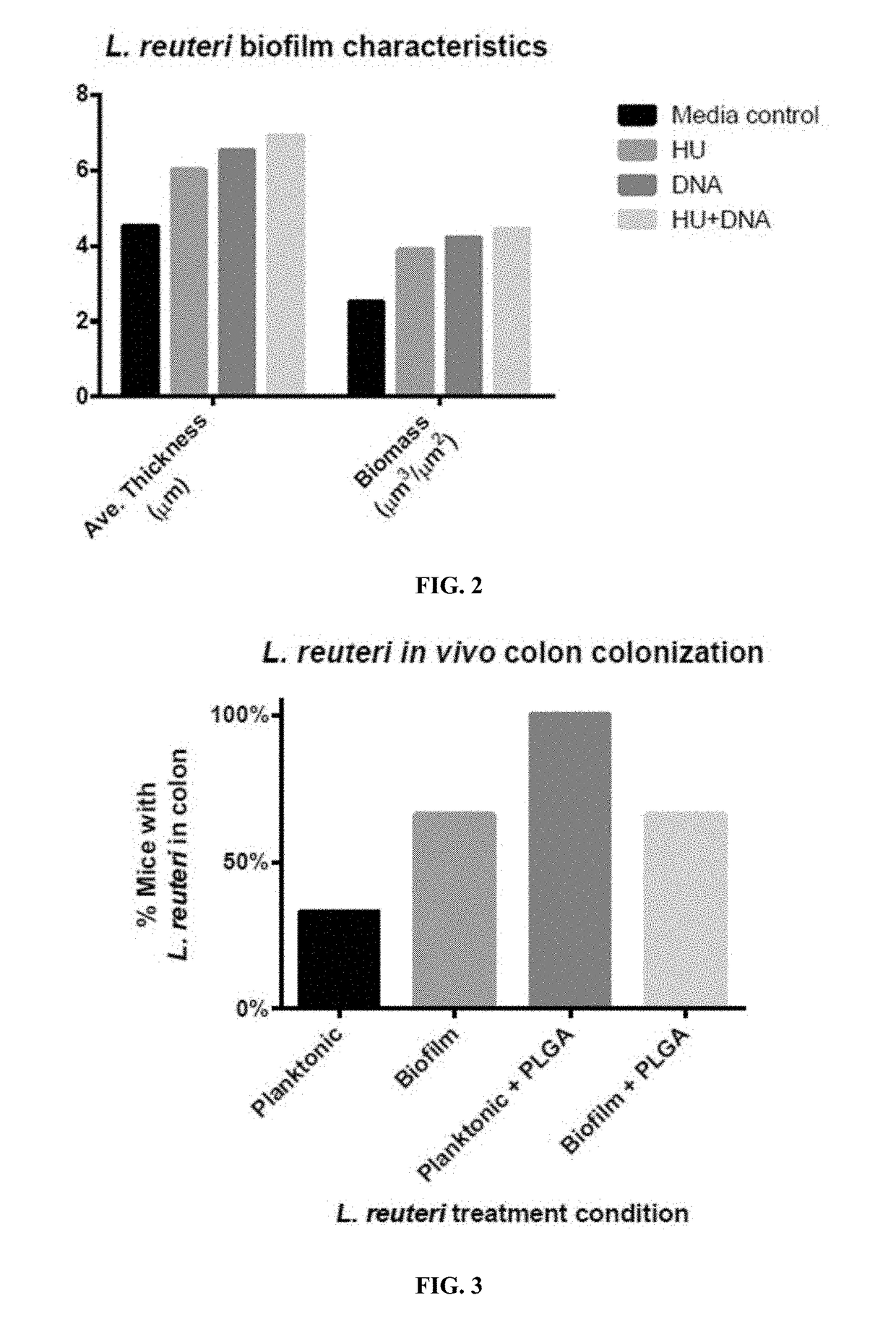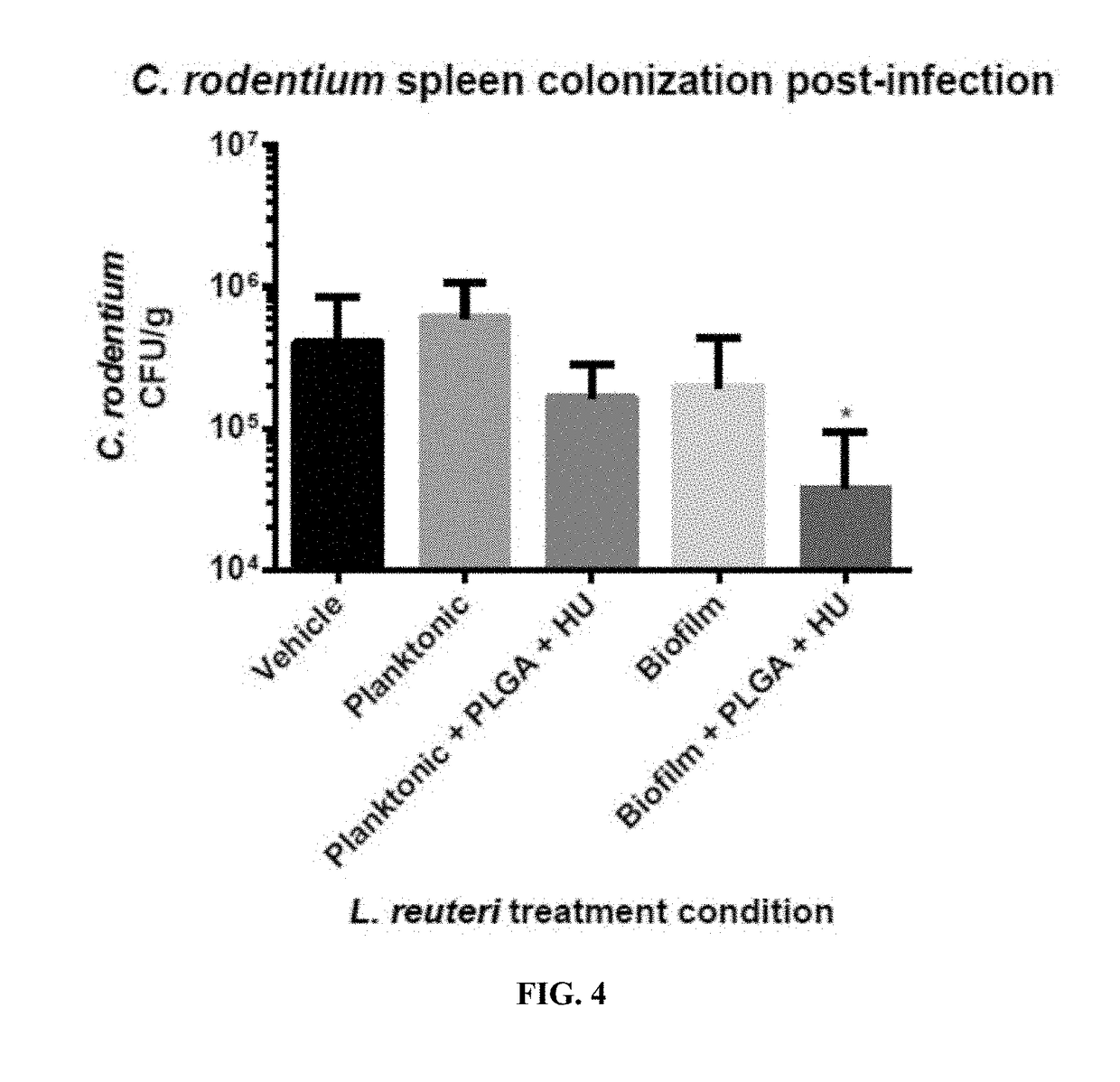Prebiotic formulations
a technology of probiotics and formulations, applied in the field of probiotic formulations, can solve the problems of reducing the effect of probiotic bacteria on the health of patients, reducing the capacity of introduced bacteria to form a lasting biofilm, and not meeting the need for fewer probiotic doses and greater efficacy, so as to achieve enhanced efficacy and duration of therapeutic response, the effect of enhancing the efficacy of probiotic bacteria
- Summary
- Abstract
- Description
- Claims
- Application Information
AI Technical Summary
Benefits of technology
Problems solved by technology
Method used
Image
Examples
experimental examples
Example 1
[0210]To determine if L. reuteri in a biofilm state are superior to planktonic bacteria for establishment in the murine gut, L. reuteri was introduced via oral gavage, but instead of repeating the gavage daily, which is typically needed for retention of planktonic bacteria and for beneficial effects 15, 41, a single administration of L. reuteri was provided. The L. reuteri were grown in biofilm cultures or biofilm grown on poly(lactic-co-glycolic acid) microspheres, such as PLGA, or other FDA approved and biodegradable microspheres (hydrolyzed into lactic acid and glycolic acid) with diameters ranging from 20-300 μm (Beer, et al., (1998) Poly (Lactic-Glycolic) Acid Copolymer Encapsulation of Recombinant Adenovirus Reduces Immunogenicity in Vivo, Gene Ther, 5: 740-6; Kumari, et al., (2010) Biodegradable Polymeric Nanoparticles Based Drug Delivery Systems, Colloids Surf B Biointerfaces, 75:1-18).
[0211]Similar preparations of planktonic bacteria were prepared but PLGA microsph...
example 4
Characterization of Probiotic Therapeutic Biofilms for Endurance and Robustness
[0215]This example has provided strong evidence that the probiotics in the biofilm state provides a superior formulation to bacteria grown planktonically. It also provides one example of how to prepare these biofilms including the frequency of dosing. In addition, the example examines the nature of the biofilm itself to begin to determine why this state out performs planktonic bacteria. Finally, it examines the shelf life of the preparations as a prelude to reduction to practice in human hosts. Combined, this example identifies and characterizes the conditions and constituents for probiotic biofilm preparations.
example 4.1
Effects of Growth Phase
[0216]L. reuteri forms a robust biofilm in vitro and that L. reuteri in a 24-hour biofilm establishes well in the mouse gut were shown. This Example varies the age of the biofilm to determine the optimal age for biofilm establishment.
[0217]In vivo L. reuteri biofilms. L. reuteri begins to attach almost immediately when exposed to a surface. After 6 hours sufficient biomass has been produced to be both visible and to start forming the classic biofilm structures (e.g., mushroom, Abee and Kuipers, (2011) Understanding Microbial Behavior within and Outside the Host to Improve Food Functionality and Safety, Curr Opin Biotechnol, 22:133-5). L. reuteri biofilms are isolated at about 6, 12, 18, 24, 36, 48 and 72 hours, that have been grown on PGLA microspheres with HU and calf thymus DNA (as described above) normalizing to CFUs (108) and introducing them by gavage into mice (9 per time point from triplicate experiments). Each mouse is assessed by counting total lactob...
PUM
| Property | Measurement | Unit |
|---|---|---|
| diameter | aaaaa | aaaaa |
| diameter | aaaaa | aaaaa |
| concentration | aaaaa | aaaaa |
Abstract
Description
Claims
Application Information
 Login to View More
Login to View More - Generate Ideas
- Intellectual Property
- Life Sciences
- Materials
- Tech Scout
- Unparalleled Data Quality
- Higher Quality Content
- 60% Fewer Hallucinations
Browse by: Latest US Patents, China's latest patents, Technical Efficacy Thesaurus, Application Domain, Technology Topic, Popular Technical Reports.
© 2025 PatSnap. All rights reserved.Legal|Privacy policy|Modern Slavery Act Transparency Statement|Sitemap|About US| Contact US: help@patsnap.com



